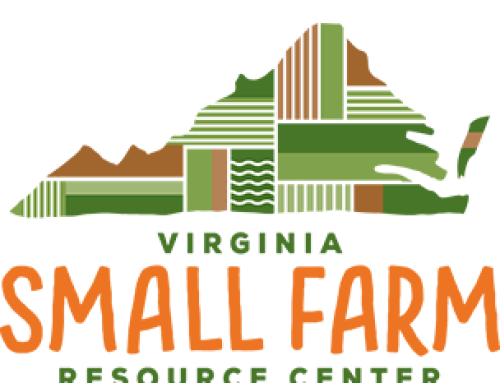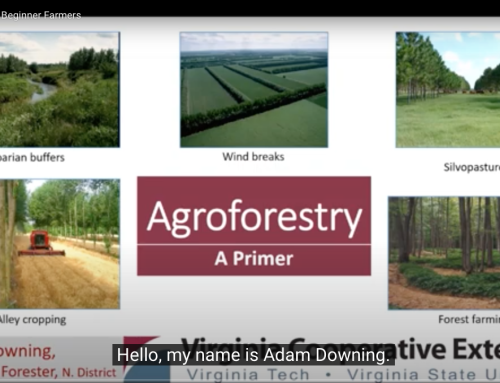Jeff Poppen, 2001 and 2021
Book Review by Pam Dawling, Author of Sustainable Market Farming: Intensive Vegetable Production on a Few Acres, and The Year-Round Hoophouse: Polytunnels for All Seasons and All Climates
Jeff Poppen at Long Hungry Creek Farm, TN, is a lively and fascinating farmer and writer. Jeff’s style is folksy, lyrical, reverent, amusing, at times whimsical or iconoclastic, and always attentive to what works, what benefits the land, and how to farm better. No doubt you will heartily agree on some points, and heartily disagree on others! These two small books are compilations of pieces he wrote weekly for his local paper from 1993-2000 and 2000-2011, revised and updated. Jeff is a flexible Biodynamic farmer, who writes for all growers and farmers who care about good food and the long-term future. Jeff’s farming joy spreads wide, with gatherings at his farm, music, TV shows, community events and mentoring young farmers. In addition to these two books, Jeff has written a digest of Agriculture, the teachings of Rudolf Steiner, the founder of Biodynamics.
The articles have been re-arranged by themes, with part of each book on specific aspects of his farming, particular seasons, individual crops, farming past, present and future. The first book starts with the importance of organic matter, compost, and learning from what is happening under our noses and eyes. By watching what a bug does, we may better understand why it’s there and how it relates to the whole local environment. We may learn to make changes in what we do, rather than focusing on eliminating the cause of the holes in the cabbage leaves. Understanding our soil structure will give us appreciation of how the growing and dying of roots improves soil.
Here is an example of Jeff’s humor, realism and humility: “Although I make many tons of compost during the winter feeding of our cattle, it is just not enough. So I’m admitting to an overabundance of idealism and a lack of poop.” He cleans out other people’s barns.
Cover crops increase the canopy of leaves collecting solar energy, transforming it into more plants and then more animals. Mother Nature sends in weeds to cover bare ground. Thomas Jefferson apparently wrote that an acre of buckwheat is worth ten loads of dung. Jeff observed how a field of buckwheat rescued a sweet corn patch. In a dry spring the corn seed did not emerge, so Jeff over-sowed with buckwheat to put some roots in the ground. The buckwheat sprouted with the dew (no rain or irrigation). When the buckwheat reached flowering (still no rain), Jeff noticed the corn had grown, presumably benefitting from the buckwheat roots moving the dew deeper into the soil.
Jeff’s description of broadcasting cover crop seeds is quite poetic, and starts with “I quiet myself.” Many people who have broadcast seeds will recognize the attentive state and loose limbs that are needed to do the job well.
Jeff’s farm became a Community Supported Agriculture farm in 1997, with 32 members paying a monthly fee to receive a box of seasonal produce and opportunities for community events at the farm.
The first book divides crops by season, starting with potatoes in spring, which Jeff chits (pre-sprouts) as we do. By setting the potatoes in flats indoors for a few weeks, the certainty of plant emergence and therefore the yield can be increased, and if the conditions aren’t right on the hoped-for planting date, planting can be postponed, while the potatoes continue to grow. Jeff tried many varieties of potatoes and found that the ones that did best were Kennebecs and Red Pontiac from the local feed store. Funnily enough, we’ve also come down to planting those two, here in central Virginia!
They grow Ebenezer onion sets, knowing they will not store. In the fall, Jeff replants remaining non-storing onions packed in a trench. These provide early green onion tops next year. Onions from seed are started in a coldframe in late September. He plants the bareroot starts out in mid-March. Walla Walla do well for big onions to eat soon, but Copra do best for storage.
With asparagus, Jeff learned the same lesson I did: do not follow instructions to plant new crowns 12″ deep! They will do better 5″ deep. Really!
A week after planting big seeds (potatoes, squash, beans, corn), before seedlings emerge, Jeff runs over the rows with a spike-tooth harrow (large-scale) or rake (small-scale), dispatching tiny weeds without damaging the seeds below the surface. There are many practices like this that we could gainfully employ to reduce our weeding work. When hoeing, observe your plants, and any problems. Squash any pest bugs as you go. Fill gaps in the row from a seed packet in your pocket.
Jeff grows rye and Austrian winter peas for the cover crop preceding winter squash, then in mid-April mows strips down in each place he wants a row, and adds manure. When the squash vines start to run, Jeff mows down more of the cover crop, now flowering, making a no-till mulch right where it’s needed. READ MORE





